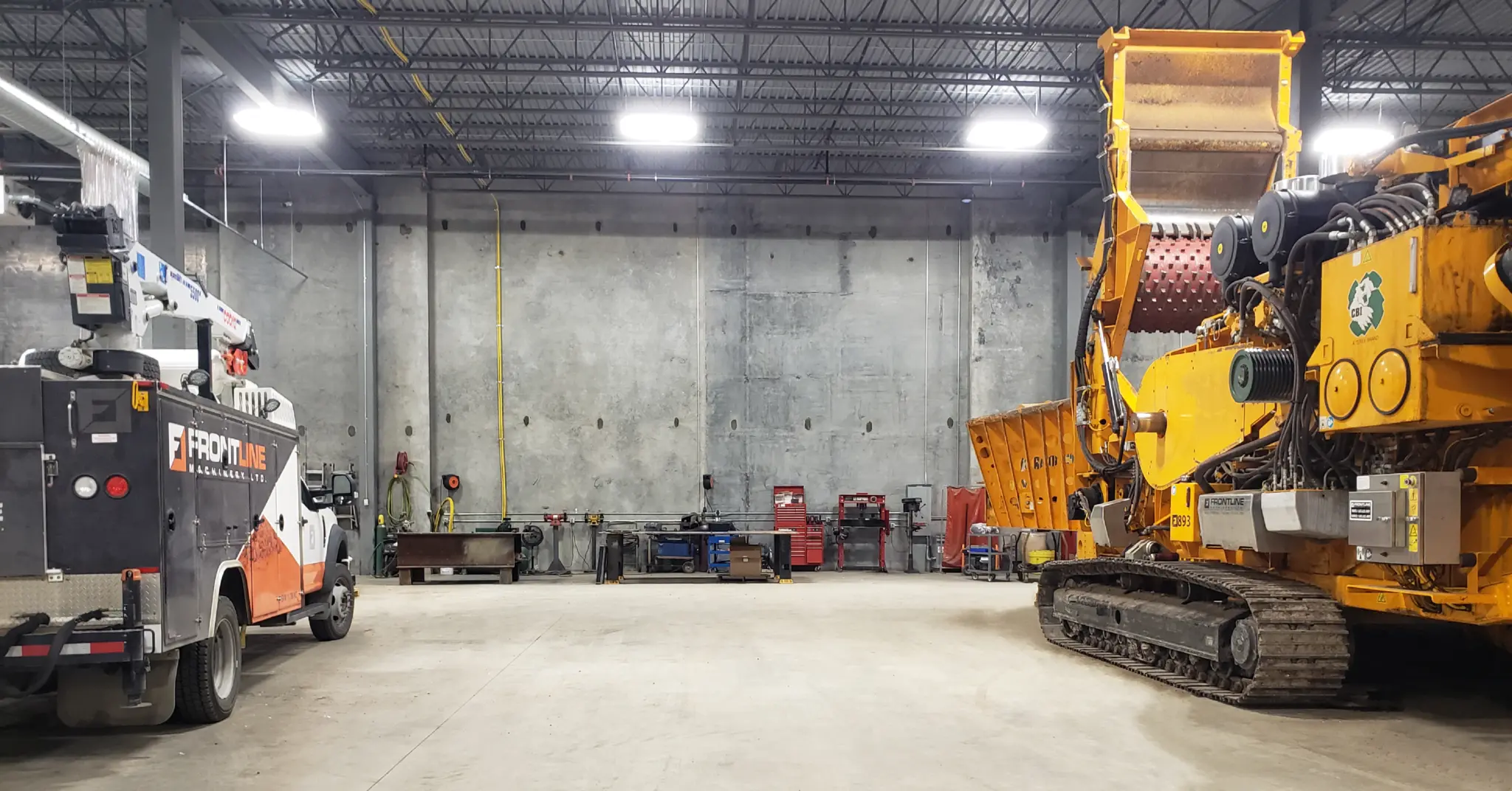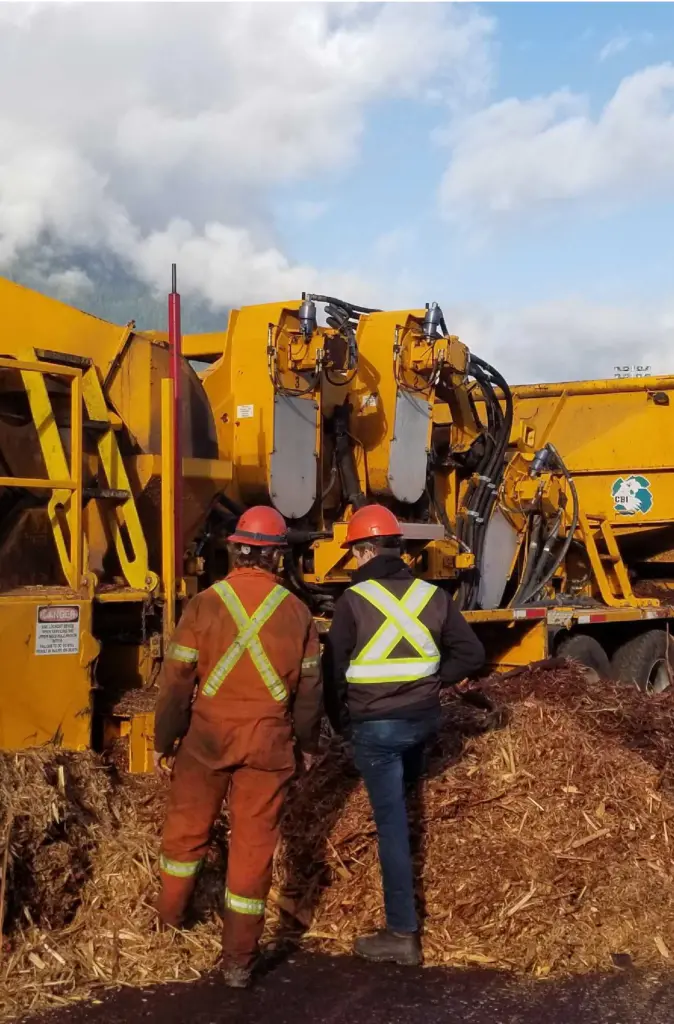Maintenance Tips for Prolonging the Lifespan of Grinders and Disc Chippers

In the big world of industries, making sure you avoid fires and keep things safe isn’t just about looking out for your crew—it’s also key to keeping your equipment in the game for the long haul. This post is all about the must-know tips to prevent fires, some general safety rules, and the lowdown on easy maintenance tricks for Disc Chippers and Grinders, so you can keep those machines ticking for as long as possible. Let’s break it down in simple terms to keep things grinding smoothly.
Fire Prevention & Safety Tips:
Daily Cleaning Routine:
• Clean the entire unit daily with air and water after completing work to prevent fires.
• Inspect and replace worn hydraulic hoses daily, especially around hot areas.
Equipment Operation:
• Ensure all employees know how to use a fire extinguisher.
• Always have a fire extinguisher or water readily available during machine operation.
• Establish a proper maintenance program to prevent fires and maintain machine functionality.
Electrical and Mechanical Checks:
• Regularly check electrical wires, battery cables, and connections for wear and tightness.
• Inspect for loose mechanical connections that may cause arcs leading to fires.
• Avoid grinding metal objects in equipment to prevent high temperatures that can start a fire.
Bearing and Rotating Elements:
• Ensure all bearings are functioning and lubricated according to the maintenance schedule.
• Prevent friction heat by ensuring no rotating elements rub against metal surfaces.
Transportation Safety:
• Check brake temperatures during equipment transportation to prevent critical temperatures.
• Ensure proper adjustment and cleanliness of the V-belt drive for the Hog.
Fire Extinguisher Maintenance:
• Regularly check and maintain the fire extinguisher in accordance with local safety regulations.
• Train workers in its proper use and maintenance, as CBI is not responsible for its upkeep.
General Operation Safety Guidelines:
Machine Proximity:
• Never stand within 100 feet behind the machine during operation.
• Avoid adjusting the discharge conveyor’s head pulley while processing material.
Safety Guards:
• Do not operate the unit with safety guards removed.
• Keep drive and power units free of combustible material to prevent fires.
Equipment Maintenance:
• Regularly inspect and clean debris around the drive.
• Never remove the engine radiator cap when the engine is running or hot.
Disc Chipper Maintenance and Daily Inspection Tips:

While the machine is off:
• Inspect wiring, hydraulic hoses, frame, PTO, fuel water separator, and oil levels.
• Perform a visual inspection of the engine, radiator, and tracks.
• Check various components for wear, leaks, and damage.
While the machine is on:
• Verify pre-cleaner and fan purge operation.
• Use a portable working light to check the pre-cleaner function.
• Verify proper fan purge operation using the control panel.
CBI Grinder Preventive Maintenance:
Rotor Bearings:
• Grease bearings every 8 hours of operation.
• Check bearing temperature, ensuring it does not exceed 190 degrees.
Engine:
• Check engine oil, coolant level, air cleaner, and inspect for leaks.
• Clean dust and debris from around the engine and radiator.
Hog Box:
• Check hammer tips, wear liners, and ensure the rotor spins freely by hand.
General:
• Ensure the grinder is level and check conveyor belt tracking.
• Keep the machine clean and free from debris.
Tracks:
• Check tension and lubricate when necessary.
CBI Grinder Maintenance Instructions:
Engine:
• Check air filter and oil level regularly.
• Clean the radiator as needed.
V-Belt Drive System:
• Check belt tension and visually inspect belts for proper alignment.
Maintenance Schedule:
• Perform daily and weekly inspections of rotor bearings, hammer tips, liners, anvil, and drive components.
• Conduct hard surfacing and replace components as required.
Chain and Conveyor Checklist:
• Regularly check chain elongation, stiff joints, sidebar wear, barrel wear, attachment wear, and roller wear.
• Inspect sprockets for hooked teeth, build-up, grooved drum flanges, and misalignment.
• Examine wear plates, track wear, and general conveyor condition.
By following these steps for maintenance, fire prevention, and safety guidelines, operators can create a safer work environment, prolong equipment life, and minimize the risk of fires. Regular inspections and maintenance schedules are crucial for the sustained efficiency and safety of the equipment.
If you’re looking for assistance maintaining or repairing your equipment, reach out to our trusted service team to help keep you grinding.
